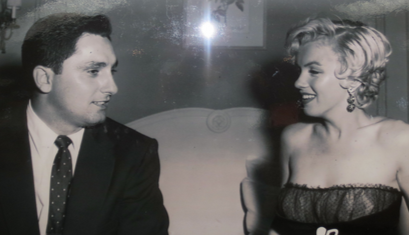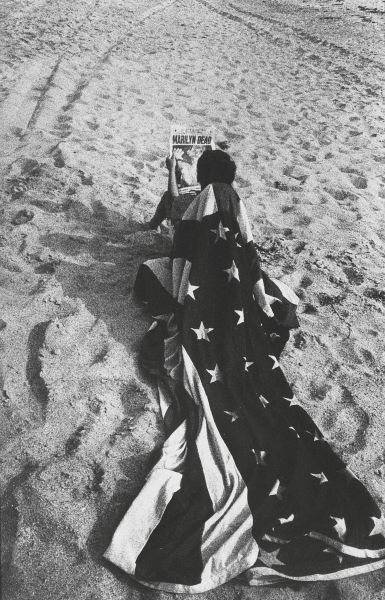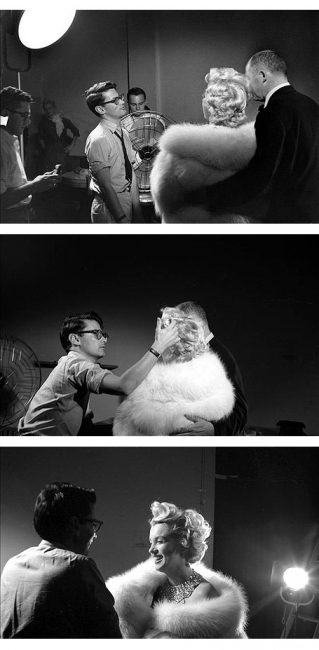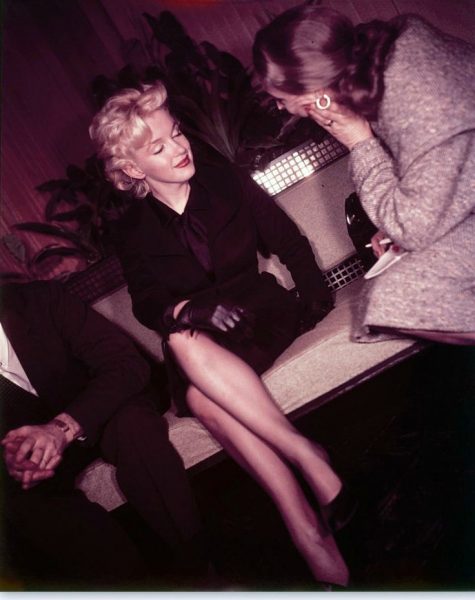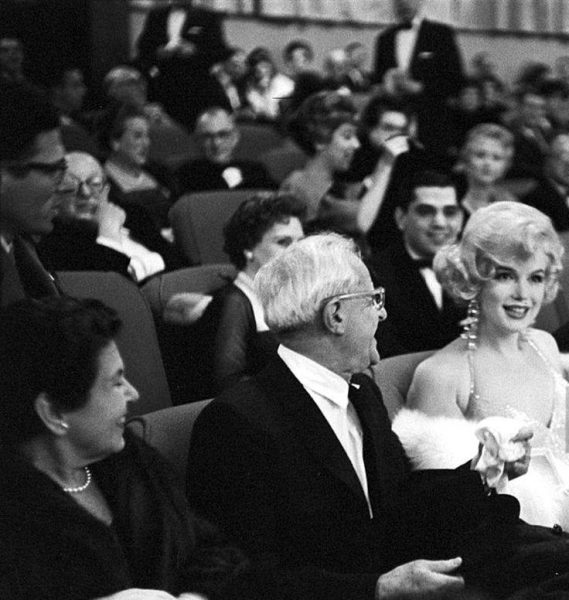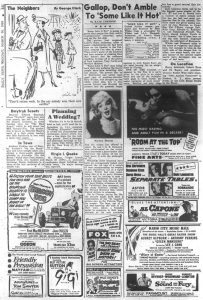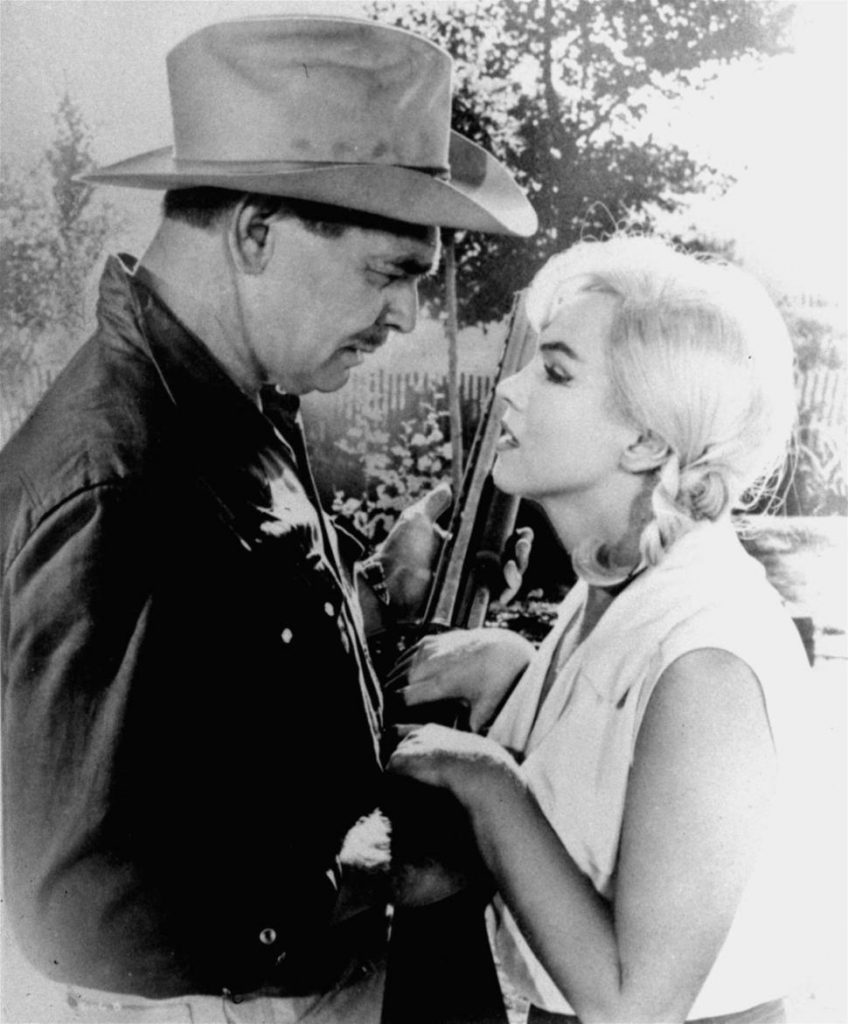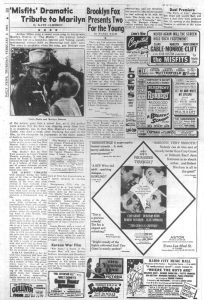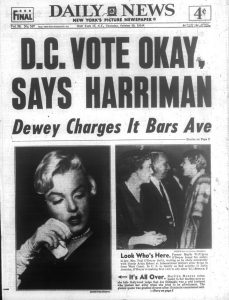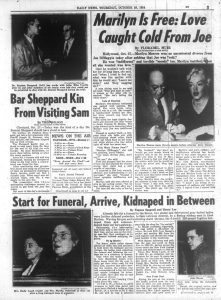(Originally published by the Daily news on Thursday, Oct. 28, 1954; written by Florabel Muir)
Hollywood, Oct. 27. – Marilyn Monroe won an uncontested divorce from Joe DiMaggio today after sobbing that Joe was ‘cold.’
He was ‘indifferent’ and terribly ‘moody’ too, Marilyn testified, when all she wanted was love.
Once he wouldn’t talk with her for 10 long days, she said, and “when I tried to find out what was the matter with him he would say: Leave me alone! and Stop nagging me!’
A man sitting next to me said out loud: ‘That guy must be nuts.’ A woman on the other side remarked:
‘She isn’t telling the whole story.’
Lots of Emotion
Marilyn’s five-minute testimony was packed with emotion. She sighed. Her voice broke twice. Once it was in a sob. She brought a handkerchief toward her face, but there weren’t any tears to wipe away.
She tilted her head slightly forward and directed her little words to Judge Orlando H. Rhodes. The judge seemed quite interested when Marilyn said Joe was indifferent to her.
Dressed in somber black – a two-piece black silk faille suit with half-plunging shawl collar, black straw hat tilted back on her head, and white gloves – she was asked right off what her name was.
‘You Mean Norma Jean?’
‘Marilyn DiMaggio,’ she told her attorney, Jerry Giesler.
‘You mean Norma Jean, don’t you?’
‘Oh, yes,’ she said.
Then she plunged into her story of how Joe had spurned her charms during their eight and a half months of marriage.
‘I expected to find love, warmth, affection and understanding in my marriage,’ she said. ‘Instead I found complete indifference and coldness.’
Marilyn said she even offered to give up her acting career, ‘but he was indifferent to that offer too.’
Not once did she refer to Joe by name.
‘My husband,’ she went on, ‘would get into moods where he wouldn’t talk to me for seven or eight – one time it was 10 days. When I tried to find out what was the matter with him he would say Leave me alone and Stop nagging me.’
‘I was not permitted to have any visitors in the house without an argument. I don’t think we had visitors more than three times during our marriage.’
Once, Marilyn said, Joe permitted someone to come into their big house ‘when I was sick, but all during the visit there was great strain.’ She didn’t say who the visitor was.
Marilyn said Joe’s coldness and indifference affected her health and ‘I was under the care of my doctor quite a bit of the time.’
Marilyn’s business manager, Mrs. Inez Melson, corroborated her story. She said when Marilyn tried to give Joe warmth he would push her away and said ‘Don’t bother me.’ She swore that before Joe and Marilyn broke up in late September – they lived under the same roof for a week, he downstairs and she upstairs – Joe told her: ‘I know I am wrong in my approach to coldness and indifference. I regret it but I cannot help it.’

